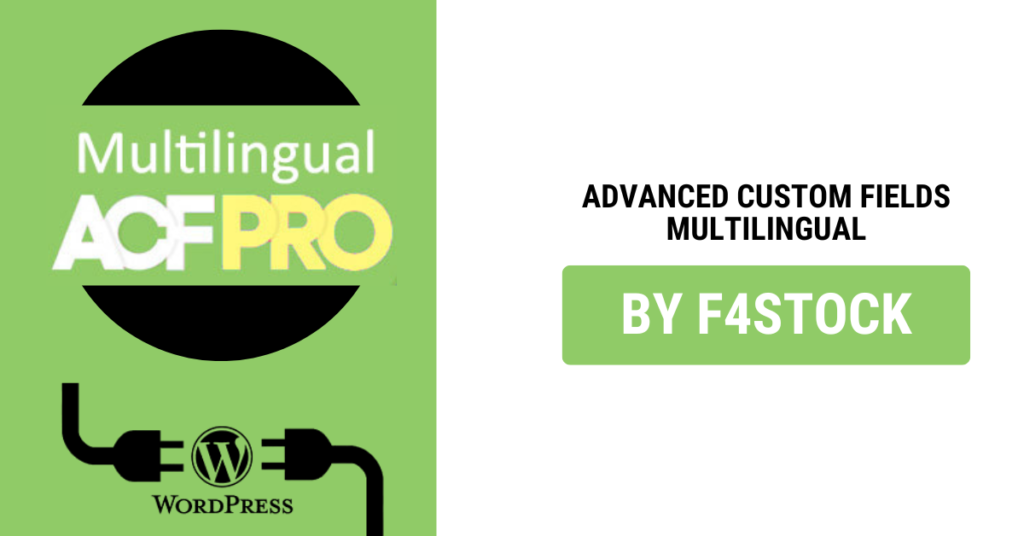As WordPress continues to dominate the web development world, building multilingual websites is increasingly becoming a necessity. Whether you’re running a global business or targeting a specific local market, creating a website that supports multiple languages is essential for reaching a broader audience.
One powerful tool that simplifies the process of building multilingual websites is Advanced Custom Fields (ACF). With ACF, you can easily create custom fields for your content. However, to truly leverage ACF’s capabilities in a multilingual environment, you need to integrate it with a multilingual plugin like WPML (WordPress Multilingual Plugin).
In this guide, we’ll walk you through how to set up and manage ACF fields on a multilingual WordPress website, offering you a comprehensive understanding of the integration and best practices.
Why Use ACF for Multilingual Websites?
Advanced Custom Fields allows developers to add complex fields, such as text, images, file uploads, and more, to the default WordPress post types. When combined with WPML or similar plugins, ACF makes it easy to manage and display content in multiple languages across your site. Some reasons why ACF is ideal for multilingual sites include:
- Custom Content Fields: ACF enables you to add custom fields tailored to your content type, which is useful for managing specific content in different languages.
- Ease of Integration: ACF integrates seamlessly with WPML, allowing you to translate custom fields alongside your regular content.
- User-Friendly Interface: ACF provides an intuitive interface that simplifies the creation and management of custom fields, even for non-developers.
- Flexibility: With ACF, you can create complex layouts, dynamic content, and multilingual forms that are difficult to achieve with the standard WordPress editor.
How to Set Up ACF Multilingual with WPML
Step 1: Install Required Plugins
Before you begin, you’ll need the following plugins:
- Advanced Custom Fields (ACF): The core plugin for adding custom fields to your WordPress site.
- WPML (WordPress Multilingual Plugin): This plugin enables multilingual capabilities for your website.
- ACF Multilingual: This add-on for WPML allows WPML to work with ACF fields seamlessly.
You can install these plugins directly from the WordPress plugin repository or by purchasing WPML and ACF from their respective websites.
Step 2: Configure WPML
Once you’ve installed WPML, follow these steps to set up multilingual capabilities:
- Select Languages: Go to the WPML settings and choose the languages you want to make your site available in.
- Translate Pages & Posts: Set up WPML to translate standard content such as pages and posts.
- Set Language Switcher: Configure the language switcher so users can easily navigate between languages on your site.
Step 3: Create Custom Fields with ACF
Next, you’ll need to create custom fields using the Advanced Custom Fields plugin. Here’s how:
- Create a Field Group: Navigate to Custom Fields > Field Groups in your WordPress admin panel. Create a new field group for the type of content you want to manage.
- Add Fields: Inside the field group, add the custom fields you want (e.g., text fields, image fields, etc.).
- Assign to Post Type: Assign this field group to the appropriate post type (e.g., pages, posts, or custom post types).
Step 4: Enable ACF Field Translation with WPML
Now, it’s time to integrate ACF with WPML:
- Go to WPML Settings: Navigate to WPML > Settings in your admin panel.
- Find ACF Translation Options: Scroll down to the “Custom Fields Translation” section. Here you’ll see a list of custom fields created with ACF.
- Choose Translation Preferences: For each custom field, you can choose how it should be handled in terms of translation:
- Copy: Keep the same content across all languages.
- Translate: Enable translation for each language.
- Do Not Translate: Keep the field content the same for all languages but don’t allow translation.
Select the translation preference based on how you want your custom fields to behave across different languages.
Step 5: Translating ACF Fields
With everything set up, you can now start translating ACF fields for each language:
- Edit Post/Page: Go to the post or page that has the custom fields you want to translate.
- Switch Language: Use the WPML language switcher to switch to the desired language for translation.
- Translate Content: You’ll now see the ACF fields for that page or post appear in the WPML editor. Translate the content as needed for the selected language.
Step 6: Displaying Translated Content
Once the ACF fields are translated, make sure to display them properly on the front end. In your theme’s template files, use the standard ACF functions to display the fields:
<?php
// Display custom field value
the_field('your_acf_field_name');
?>
WPML will automatically fetch the correct translation for each language when users switch between them.
Best Practices for ACF Multilingual Sites
- Be Mindful of Field Types: Some ACF field types (like repeater fields or flexible content fields) can be tricky to translate. Test them thoroughly and ensure translations are displaying correctly.
- Avoid Duplication: Only translate fields that require localization. If a field doesn’t need to be translated (e.g., site-wide settings), consider setting it to “Copy” in WPML’s translation options.
- Use WPML’s String Translation: For any text strings outside of ACF fields (like widget text, theme settings, etc.), use WPML’s String Translation feature to translate them.
- Test Thoroughly: After setting up your multilingual ACF fields, thoroughly test your site in different languages to ensure everything is working smoothly.
Troubleshooting Common Issues
While ACF and WPML work well together, you might encounter some common issues:
- Missing Translations: If translations are missing, ensure that you’ve set the correct translation options for each custom field in WPML’s settings.
- Field Displaying Incorrect Content: If ACF fields are not displaying correctly in a translated language, double-check the translation status and ensure the correct field values are entered in each language.
- Performance Issues: Multilingual websites can sometimes slow down, especially with large amounts of content. Consider optimizing your database and caching settings to maintain good performance.


